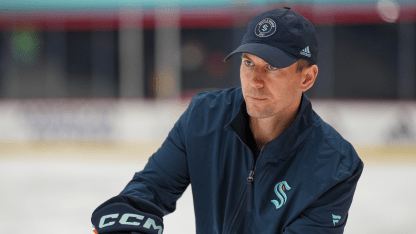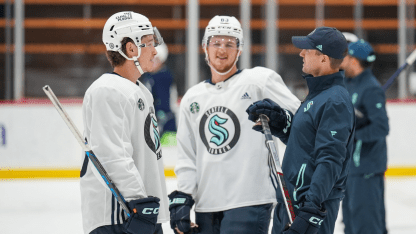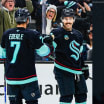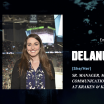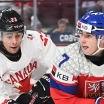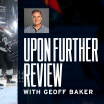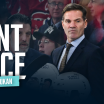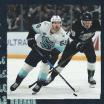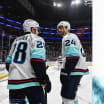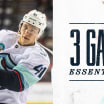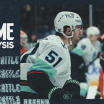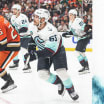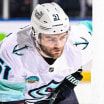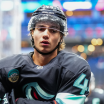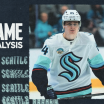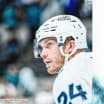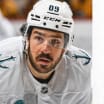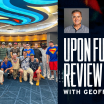Introduce us to the different members of your team and what each of them specifically do. What are their areas of focus?
I’m fortunate to have a great staff. I have people that I really trust and who are experts in their field. I'll start off with Justin Rai. He's a very intelligent, young hockey person who is well researched. He has a very interesting approach to the game and development – it’s heavily video-based and heavily researched based. He has great communication skills with our prospects. He gets them excited about development and building new areas of their own game.
Frans Nielsen is based in Malmo, Sweden, has an outstanding playing history, and has a real passion for development. He did it the long way: coming from Europe to the American League and earning his way to the National Hockey League. He had a successful career and has passion for the process. He’s done a great job connecting with our European players and helping them come over (to North America).
Cory Murphy was just added this past year. He has a great coaching background in Sweden, Finland, and at the Olympics with Team Germany. He brings an outstanding coaching skill set into player development, and he has really helped our defense prospects - we've had great success with those relationships so far. He's made a big difference in our recent picks with their details and progressing through their first year as a drafted player. We're very fortunate to have his skill set and personality on our staff.
How would you describe the development process after a player gets drafted or signed as a free agent by the Kraken and now they're under your purview?
We handle them from the day they get drafted until the day they've established themselves as full-time NHL players. That's probably the simplest way to look at it. We know how important each step is following the Draft: learning to be a young pro, getting prepared for pro hockey, developing at the American League level, and finally making it to the National Hockey League. But the last step of staying in the league and finding a full-time role is the last step. So, we want to stay with them through the full process.
And during that process, we make it clear that development is not just being the players’ skills coach. Development is finding a way to get the person from Draft Day into the National Hockey League. For each player, there is always a long list of areas to work on. We like to simplify the message and keep the player focused on the priority areas, which are different for each player. For example, what one player needs skill-wise might be a barrier to them getting into the league or not. Another situation might be someone transitioning from Europe to North America and learning English is a crucial step. So, with each player it's totally unique.
You talk about those things being different. Is that something your team identifies and that is disseminated to the players through your team? How does that prioritization happen?
It all starts at the handoff from the amateur scouts (post-Draft). The Kraken amateur staff does so much research and due diligence on the player that when we take him into player development, we rely heavily on their information. They set us on a course of first understanding what this player needs? Second, what can we now add to the player as a development staff? Then, as each player progresses, life comes at them, and things change along the way. We have to know the person and their game, so we can make adjustments along the way. Then, as we progress closer to pro hockey, we continue to make these adjustments to make sure that the player stays on an upward course.
There's a lot of parties your team has to communicate with. What communication and/or direction are you taking from General Manager Ron Francis and his front office team?
Ron establishes the type of people and players that we want. You look at our hockey team and there are themes that start becoming clear in terms of the type of character, the type of work ethic, the type of skill and the type of speed that we expect in Seattle. Ron is very clear of what is required to be a Seattle Kraken. Then it's our job to make sure that our young players know that immediately and know the environment they're walking into. That's the biggest thing: Ron and ownership have set a course of who a Seattle Kraken player is and it’s our job to make sure our guys get up to speed as fast as possible.
Do you have a feedback loop to them (management)? How do you keep them abreast of how each player’s process is going?
Yes, we're in constant communication with our upper management group. We want them up to date on each prospect in terms of strengths, weaknesses, gaps, and development timeline so that there's no surprises along the way.
Except for the players in Coachella Valley, each of the players you work with has a different coach. How do you interface and communicate with a different coaching staff that may or may not be under the Kraken’s purview?
It's one of the most interesting things about our sport. In baseball, basketball, football, usually your prospects team or system is under team control. In hockey, players are with different teams and we don't have control of what goes on in these different leagues. So we have to build relationships, not just with the players, but also their coaches, their managers, their agents, and their family. There's a long list of people that we need to work with and, more importantly, be aligned with in terms of messaging. The relationships with these teams are so important because our prospects have to be successful with their club teams before they ever get to Coachella or Seattle.
In terms of communicating with the players, is there a routine to that? What is the intention behind how that happens and do players reach out to you as well?
(After this summer’s Draft) we’ll possibly have 41 prospects by this summer, and each player is unique in terms of how they want to communicate and what their level of engagement is for certain topics. But we still have a baseline of how much we want to talk to them and see them. We focus on making sure we travel to see them play live a lot early in the season. It's a time of the year when the club teams are starting up, and we want to see our prospects transition to new roles and responsibilities. In the back half (of their seasons), we focus on tactical concepts and connecting with the player over Zoom and video calls. The split approach has worked well so far. We like to have a big body of work on the player before we get into the tactical side of their game. For the players turning pro soon, we talk a lot about what that transition is going to be like. Overall, the communication is constant but it does evolve throughout the year.

